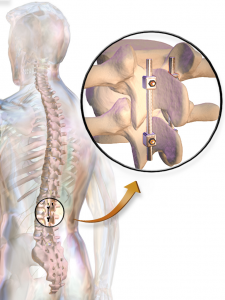If you are struggling with lower back pain that radiates down your leg, you might have hit the internet searching for answers, only to find the terms “sciatica” and “herniated disc” discussed frequently. This is because both conditions can cause debilitating back...
You open your eyes, stretch, and sit up, ready to start the day. But the moment your feet hit the floor, a sharp or aching pain shoots through your heels, arches, or the balls of your feet. Morning should feel refreshing, yet instead, you find yourself hobbling to the...
Are you a fitness enthusiast or a dedicated athlete who has suddenly been sidelined by a nagging, persistent pain in your calf and ankle? That sharp or aching sensation that flares up during or after activity could be the result of Achilles tendonitis. The Achilles...
Types of Spine Surgery

Deciding to have back surgery is a big decision and it is often a last resort for those who have suffered from pain or injury and have found relief nowhere else. Additionally, many people do not understand the ins and outs of the surgery procedures and do not know what to expect or what they are getting into with surgery. Learning about back surgery before it is time to take that step and knowing its risks and benefits can help you make an informed decision that works best for you and your unique situation and needs. The most important thing is to understand advantages and disadvantages that back surgery can bring.
Types of Back Surgery
Spinal Fusion. Spinal fusion is the leading type of back surgery performed to help relieve back pain. In this type of surgery, a surgeon will fuse the vertebrae together in order to restrict the movement of the bones and prevent the never from becoming pinched or inflamed. Reduced spinal motion may slightly reduce range of motion for some patients but this usually is not an issue if only two or three vertebrae are fused together. One risk of the spinal fusion surgery is the possibility of an incomplete fusion, which will require additional surgery and could lead to further complications.
- For this sort of back surgery, parts of the bone, ligaments, tendons, bone spurs, or other problem areas are removed from the spinal area. This helps to reduce pressure on nerves, which can cause numbness, weakness, and paralysis. A laminectomy surgery, especially when it involves removing a lot of material from the spinal column, may cause the spine to be less stable. Weakness can lead to other spinal issues and problems so a spinal fusion procedure is often done at the same time to ensure the affected vertebra are properly reinforced.
Discectomy. The naturally occurring cushion that separates vertebrae is called a disc, and if the disc slips out of place it may press on a spinal nerve, resulting in pain and numbness. A slipped or bulging disc is on of the most common types of spinal in juries associated with improper lifting and bending. To correct this, a doctor will perform a discectomy procedure where some or all of the disc is removed so it fits back into the space between the spinal bones. This surgery can also be done in conjunction with other types of surgery. The risks predominately involve the chance of the disc slipping back out of place during strenuous activity or heavy lifting.
Disc Replacement. If the disc has been damaged beyond repair and cannot be saved, then a disc replacement surgery is generally the only other available option. A synthetic disc is then placed into the space to keep the vertebra apart and cushioned properly. Recovery time is generally shorter than most other surgery options. The only real risks involved are along the lines of the disc becoming dislodged or the body rejecting the synthetic material, though these chances are slim at best.
Interlaminar Implant. Another option for back surgery is getting an implant that is inserted into the spine. The implant is usually in the form of a U-shaped device. The device is placed in the spine and helps keep things aligned and spaced properly in order to protect the nerves of the spine. The procedure provides stability and support to the spine without a drastic reduction to the range of movement and motion. The biggest risk for this implant is needing follow up surgeries to maintain the implant if necessary.

